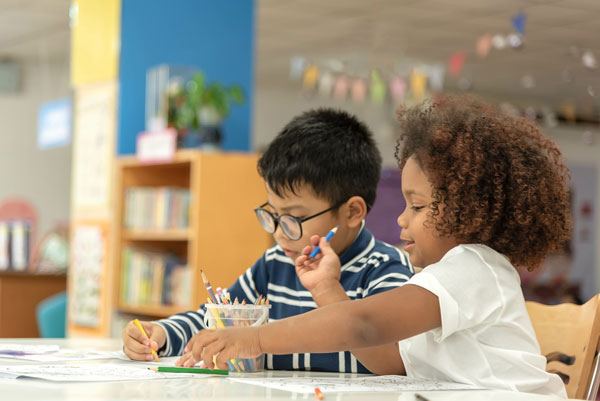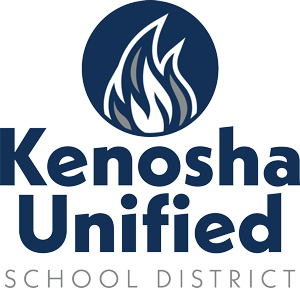Kindergarten Academics

English Language Arts
Standards
- Wisconsin English Language Arts Standards (Revised 2020)
Resources
Kindergarten Units
| Quarter 1 | Quarter 2 | Quarter 3 | Quarter 4 | |
| Reading | We Are Readers | Super Powers: Reading with Print Strategies and Sight Word Power | Bigger Books, Bigger Reading Muscles | Becoming Avid Readers |
| Writing | Personal Narrative | Personal Narrative | Opinion | Information / Teacher Choice |
| Phonics | Making Friends with Letters | Becoming Word Scientists | Word-Part Power
Vowel Power |
Playing with Phonics |
Parent Resources for ELA
- RAZ Information for Families
Your child has access to an award winning literacy resource. Click on this link to learn more about Raz Plus from Learning A-Z! - Act 20 Resources & Family Activities
Math
Standards
- Wisconsin Math Standards (revised 2020)
Resources
Kindergarten Units
| Quarter 1 | Quarter 2 | Quarter 3 | Quarter 4 |
| Unit 1: Numbers to 5 and 10 | Unit 3: Bikes & Bugs: Double, Add & Subtract | Unit 5: Two- Dimensional Geometry | Unit 7: Weight & Place Value |
| Unit 2: Numbers to Ten | Unit 4: Paths to Adding, Subtracting & Measuring | Unit 6: Three- Dimensional Shapes & Numbers Beyond Ten | Unit 8: Computing & Measuring with Frogs & Bugs |
| Please contact your child’s teacher for more information on specific learning targets, other resources used, or other ways to help your child learn. | |||
Parent Resources
- Math at Home – collection of activities, organized by mathematical content, uses familiar routines that can be used by students and families.
- Math Apps – free apps that are based on the visual models student use in Bridges in Mathematics
Social Studies
Standards
Wisconsin Social Studies Standards
Kindergarten Units
| Quarter 1 | Quarter 2 | Quarter 3 | Quarter 4 |
| My Family, My School | Everybody Works | Where We Live | Life Then and Now |
| Please contact your child’s teacher for more information on specific learning targets, other resources used, or other ways to help your child learn. | |||
Science
Standards
Kindergarten Units
| Quarter 1 | Quarter 2 | Quarter 3 | Quarter 4 |
| Needs of Plants and Animals: Milkweed and Monarchs | Pushes and Pulls: Designing a Pinball Machine | Sunlight and Weather: Solving Playground Problems | |
| Please contact your child’s teacher for more information on specific learning targets, other resources used, or other ways to help your child learn. | |||
Social Emotional Learning
Social-Emotional Learning (SEL) helps children develop the skills they need to succeed in school and in life. These include:
- Understanding and managing emotions
- Making responsible decisions
- Showing empathy and kindness
- Building positive friendships
- Solving problems in peaceful ways
SEL supports the whole child—academically, socially, and emotionally—helping students feel safe, confident, and ready to learn.
Elementary school is a time when children are learning how to navigate the world around them. As they grow, they begin to understand themselves, others, and how to work together. SEL helps students:
- Develop self-confidence and independence
- Learn how to handle big emotions
- Build friendships and resolve conflicts
- Follow directions and stay focused in class
- Create a strong sense of belonging at school
When students feel supported socially and emotionally, they are more engaged in learning and better prepared for future academic success.
KUSD uses the Second Step Elementary program, a trusted, research-based curriculum that teaches SEL skills in a developmentally appropriate and engaging way. Second Step lessons are taught in the elementary classroom and focus on:
- Skills for Learning – Listening, focusing attention, and being assertive
- Empathy – Understanding and caring about others’ feelings
- Emotion Management – Recognizing strong emotions and calming down
- Problem-Solving – Using step-by-step strategies to make good choices
Lessons include stories, songs, discussions, games, and role-playing to help students practice their skills in fun and meaningful ways.
Music
All K-5 students in the Kenosha Unified School District participate in general music for 45 minutes per week. National Core Arts Standards
Kindergarten learning objectives for music:
Students will experience and interact with the following:
Emerging Rhythm Skills:
- Pulse/Steady Beat
Emerging Melodic Skills:
- Melodic direction (not pitch matching)
- Pitch moving up or down (contour)
- High and low
- Imitate vocal glissandi
- Echo simple melodic patterns using head voice.
- Sing simple songs in head voice.
- Speak simple chants.
- Spontaneously create an original tune using two or more notes
Emerging instrumental skills:
- Perform the pulse on classroom instruments (percussion).
- Use proper playing technique classroom instruments (percussion).
- Depending on access:
- Rhythm sticks
- Shakers
- Wood block
- Hand drum
- Body percussion
- Depending on access:
Emerging interaction with music
- Imitate creative movement with or without music.
- With guidance, identify the expressive intent of music.
- Experience various styles of music.
Grade Level Musical Elements
- Four voices
- Singing
- Speaking
- Whisper
- Shouting
- Loud and soft
- Slow and fast tempo
Art
All K-5 students in the Kenosha Unified School District participate in art for 45 minutes per week. National Core Arts Standards
Kindergarten learning objectives for visual art:
Elements and Principles of Art:
- Line:
- Identifies and uses a variety of line qualities such as: Thick, Thin, Vertical, Horizontal, Diagonal, Zigzag, Curved, Straight, Broken.
- Shape:
- Identifies and uses six basic geometric shapes (circle, square, rectangle, triangle, oval, rhombus).
- Color:
- Identifies primary colors (red, yellow, blue).
- Pattern:
- Decorates art with repeating elements.
Artistic Process:
- Experiments with new materials and processes (Including 2D and 3D materials).
- Explains how artists get their ideas.
Craftsmanship:
- Identifies good craftsmanship.
Responding:
- Explains what an art museum is and why it is important.
- Describes art with details.
Connecting:
- Explains how art is a form of communication.
- Describes what a picture represents.
Contact Information
Mary Hoover
Coordinator of Elementary ELA & Social Studies
mhoover@kusd.edu
262-359-6311
Stacy Cortez
Coordinator of Elementary Math and Science
scortez@kusd.edu
262-359-7544
Scott Plank
Coordinator of Fine Arts
splank@kusd.edu
262-359-6389
Christine O’Regan
Coordinator of Library Media & Instructional Technology
coregan@kusd.edu
262-359-7444
Bryan Mogensen
Coordinator of Athletics/Physical Education
bmogense@kusd.edu
262-359-6384
Laura Stone
Coordinator of Student Support
lstone@kusd.edu
262-359-2492
